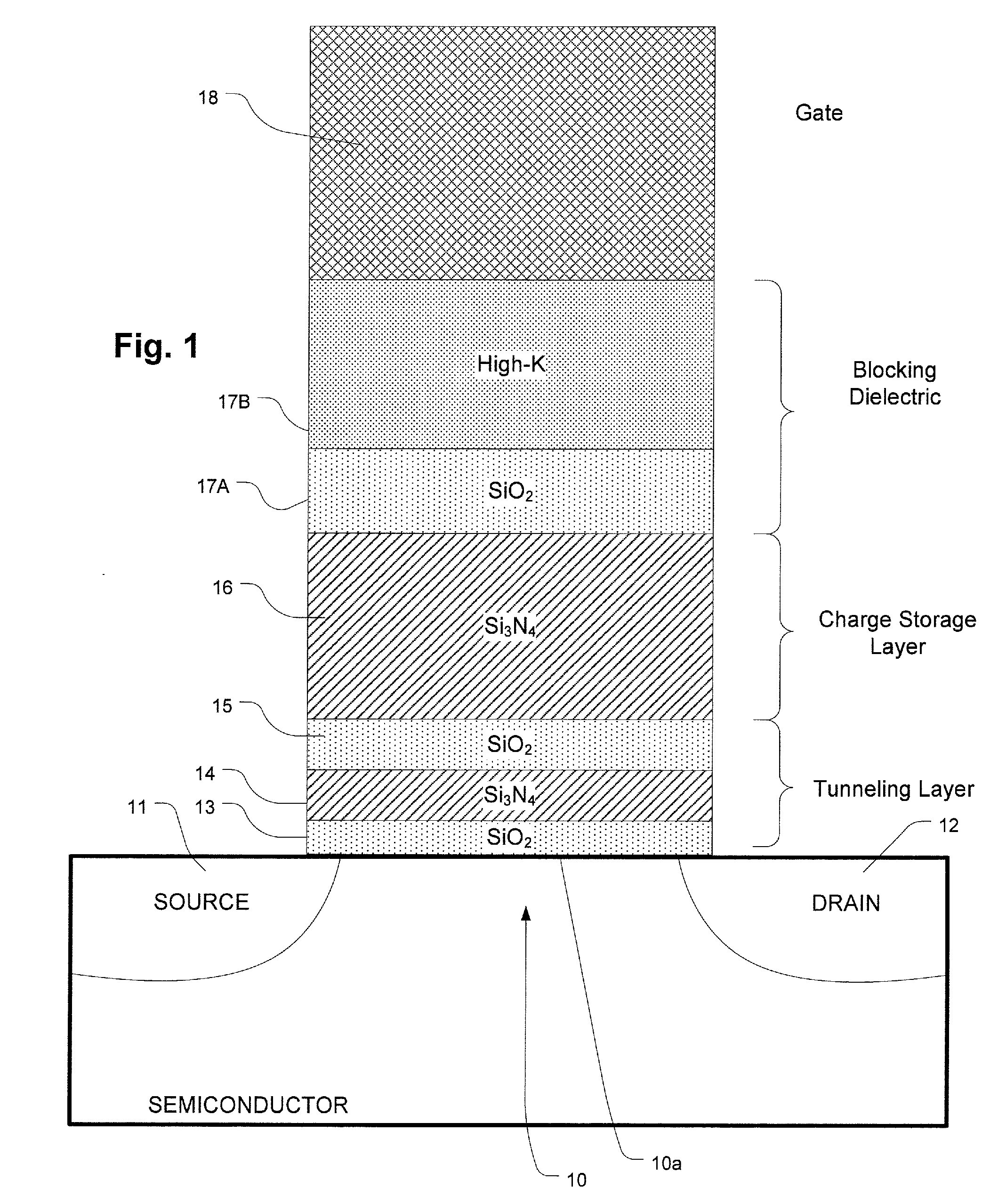HIGH-k CAPPED BLOCKING DIELECTRIC BANDGAP ENGINEERED SONOS AND MONOS
a dielectric bandgap and high-k capped technology, applied in the field of flash memory technology, can solve the problems of limiting the ability to increase the density of flash memory, affecting the performance of flash memory, so as to improve the overall reliability, reduce the level of erase saturation, and improve the endurance and disturb characteristics of the device
- Summary
- Abstract
- Description
- Claims
- Application Information
AI Technical Summary
Benefits of technology
Problems solved by technology
Method used
Image
Examples
Embodiment Construction
[0065]A detailed description of embodiments of the present invention is provided with reference to the FIGS. 1-34.
[0066]FIG. 1 is a simplified diagram of a charge trapping memory cell employing a multilayer blocking dielectric layer and a bandgap engineered dielectric tunneling layer. The memory cell includes a channel 10, a source 11 and a drain 12 adjacent the channel in a semiconductor body. A gate 18 overlies a multilayer stack, including the multilayer blocking dielectric layer, the charge trapping layer and the tunneling layer, of dielectric materials acting as the charge storage structure.
[0067]Gate 18 in this embodiment comprises p+ polysilicon. N+ polysilicon may also be used. Other embodiments employ metals, metal compounds or combinations of metals and metal compounds for the gate 18, such as platinum, tantalum nitride, metal silicides, aluminum or other metal or metal compound gate materials (e.g. from Ti, TiN, Ta, Ru, Ir, RuO2, IrO2, W, WN, and others. For some applicat...
PUM
 Login to View More
Login to View More Abstract
Description
Claims
Application Information
 Login to View More
Login to View More - R&D
- Intellectual Property
- Life Sciences
- Materials
- Tech Scout
- Unparalleled Data Quality
- Higher Quality Content
- 60% Fewer Hallucinations
Browse by: Latest US Patents, China's latest patents, Technical Efficacy Thesaurus, Application Domain, Technology Topic, Popular Technical Reports.
© 2025 PatSnap. All rights reserved.Legal|Privacy policy|Modern Slavery Act Transparency Statement|Sitemap|About US| Contact US: help@patsnap.com



